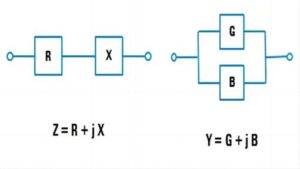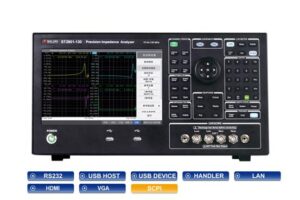1、What is an impedance analyzer?
An impedance analyzer is a computing device that measures the opposite of current in an alternating current (AC) system, that is, an instrument that measures the impedance characteristics of electronic and electrical components, semiconductor devices or materials, and can perform accurate measurements in the impedance range and wide frequency range. It uses the different conductive effects of the object, and when a fixed low-level current is applied to the surface of the object, the various devices, equipment parameters and performance advantages and disadvantages of the object are calculated through the impedance.
2、Why do we measure impedance?
To understand why we measure impedance, we first need to explain in detail what impedance is. Impedance can be defined as the apparent resistance to the flow of current in a circuit. In other words, impedance is the ability of a material or component to pass current. Described from a quantitative point of view, impedance is the ratio of the voltage across a circuit to the current flowing into the circuit: z= In the formula, Z is impedance (Ω), which is a complex number, the real part is called resistance, and the imaginary part is called reactance (Fig. a); V is the voltage across Z; I is the current through Z.

3、Saluki – STB8851 Series Precision Impedance Analyzer.

The STB8851 series impedance analyzer has changed the complex and cumbersome operation interface of traditional instruments. Based on the Windows 10 operating system, it has realized a fully computerized operation interface, making the test more intelligent and easier.
STB8851-130 Precision Impedance Analyzer The LCR tester also surpasses the 120MHz frequency bottleneck of similar instruments; it solves the defect that similar instruments can only analyze but cannot test independently; it adopts two interfaces of single test and analysis to make the test easier.
Thanks to the advanced automatic balancing bridge technology, the basic accuracy of 0.08% can be guaranteed in the frequency range of 10Hz-130MHz.
The test speed as fast as 5ms and the impedance test range up to 1GΩ can meet the measurement requirements of components and materials, especially beneficial to the measurement of low loss (D) capacitors and high quality factor (Q) inductors. The port configuration of the four-terminal pair can effectively eliminate the influence of the electromagnetic coupling of the test line, and expand the lower limit of the low-impedance test capability ten times lower than that of the conventional five-terminal configuration instrument.
4、Applications of Saluki – STB8851 Series Precision Impedance Analyzer.
The impedance of components is affected by many factors: frequency, test signal, DC bias, temperature, etc. In the real world, no device is pure resistance, pure capacitance or pure inductance. Any commonly used device usually has some parasitic parameters (such as parasitic resistance, parasitic inductance and parasitic capacitance caused by device pins, materials, etc.). The combination of the main characteristics of the device and the parasitic parameters will make a simple device behave like a complex circuit in actual work. When testing and measuring electronic components, not all parasitic parameters will affect the measurement results, but it is some main parasitic parameters that determine the frequency characteristics of components. When the impedance values of the main components are different, the main parasitic parameters will also be different. Therefore, the impedance will seriously affect the stability of electronic equipment during the use of electronic components. Only when it is measured accurately can it be adjusted to ensure the stable operation of the equipment.



